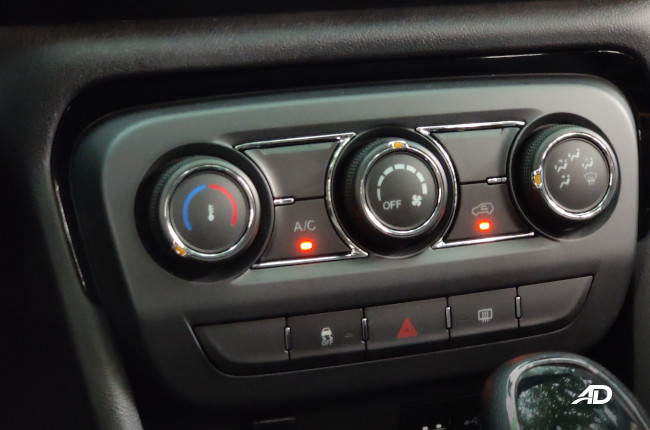
Climate controls are one of the standard features that all vehicles have today. While in the early 70s to the earlier 90s air-conditioning was just an option, however, this feature is now a must-have for the vehicles of today.
Automatic climate controls, often found in more premium vehicles or higher tier variants, can be straightforward or padded with innovation after innovation. Manual climate controls, on the other hand, is the classical approach when it comes to heating or cooling your car.
Automatic climate controls: A more computerized system

Automatic climate controls are the “set it and forget it” method of keeping your cabin cool. All one has to do is set it to the desired temperature and let the computer systems to the rest. Automatic climate controls work by first letting the user set their desired temperature, then it ramps up the air conditioning system to meet the set requirements. It then utilizes sensors that have been placed all around the cabin in order to maintain the specified temperature. The system does this all on its own without the need for human intervention. When the outside temperature gets too hot or too cold and rises or falls below the specified temperature, the climate control system will modify the fan speed and thermostat to adjust accordingly to regain the desired temperature.
As technology has evolved, so too have climate control systems. They have now progressed into zoned systems that use the same technology to heat or cool certain parts of a vehicle. This gives both the driver and passengers the ability to sit comfortably at their own desired temperature.
Climate control systems require more sensors and more technology to operate; these were more commonly found in luxury or higher tier vehicles. As technology has advanced, climate control systems have slowly found their way into more entry-level vehicles giving users a more premium experience. However, these systems were normally relegated to the higher-tier variants giving interested buyers the option to “buy upwards” and aim for a higher trim-level for more convenience. The end result is that those who want this specific feature would have to buy a trim-level higher in order to get it.
Manual Climate controls: Keeping yourself cool the old fashioned way

In its most elementary form, an air conditioning system in a car usually consists of three knobs, the thermostat to control the temperature, one for fan speed, and one to change the airflow.
This lets the user manually set how strong the air conditioning system cools or heats the cabin and set the fan speed all on their own. While there is some guesswork to be done as most air conditioning systems do not come with a digital display, it still works well and reliably. The only downside to manual air conditioning is that there is no automation so you have to do everything yourself.
While simple it is still proven to be effective for cooling your car. Sure, you will have to do everything on your own and you won't get access to zoned-climates, but it gets the job done and it does its job well. The response is also instant instead of waiting for the sensors and computer to kick in for automatic climate control units.
Verdict
It all boils down to personal preference. While automatic climate controls are indeed a nice feature to have as the system does everything for you. It does come at a higher price tag, remember these features normally come with higher tier variants or more premium vehicles, and as such be prepared to fork over a bit more money to get the functionality.
If, however, you don’t mind setting the temperature manually, or you prefer to do so, then getting a vehicle with manual air conditioning controls best suits you. This opens your purchasing options to a wider range of more affordable vehicles, as manual controls are a standard for all vehicles being sold today. With that in mind, you can still treat an automatic system like a manual system, it'll often take a few more steps to get your desired setting.
Latest Features
-
An all-electric future: The Porsche Macan Electric / Featured Article
Porsche’s Macan goes all-electric; it’s a new beast with an electrified heart, yet unmistakably Porsche in performance and spirit.
-
Which Kia should I buy? / Featured Article
We’re here to help you decide which Kia vehicle is best for you, whether it’s a sedan, crossover, or minivan.
-
Why Lynk & Co is a good option for luxury car buyers / Featured Article
Lynk & Co offers premium value for those exploring the luxury market.
Popular Articles
-
Electric Vehicles in the Philippines for under P1 million
Jerome Tresvalles · Aug 19, 2025
-
Top 3 Cars For Every Lifestyle—What Cars Are Right For You? | Behind a Desk
Caco Tirona · Apr 24, 2024
-
5 Tips to Maximize Fuel Efficiency
Jerome Tresvalles · Sep 09, 2024
-
Five driving habits that are draining your fuel tank
Jerome Tresvalles · Jun 24, 2025
-
Can engine braking harm your engine?
Jerome Tresvalles · Sep 11, 2025
-
Do electric cars even need maintenance?
Jerome Tresvalles · Oct 23, 2024
-
Best vehicles for an active outdoor lifestyle
Shaynah Miranda · Jul 25, 2024
-
How to drive different types of vehicle transmissions
May 23, 2024
-
5 easy ways to keep your car interior clean
Allysa Mae Zulueta · Nov 15, 2021
-
How to survive Metro Manila traffic
Earl Lee · Aug 16, 2022



